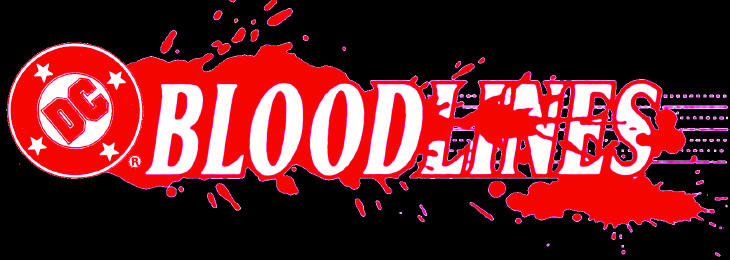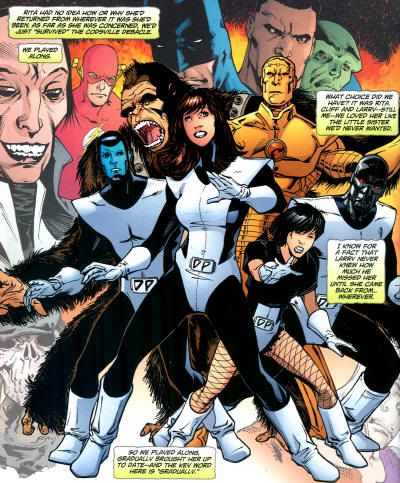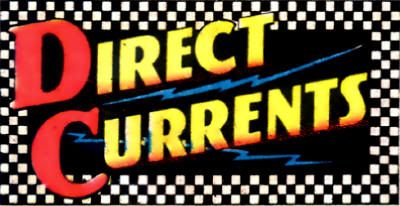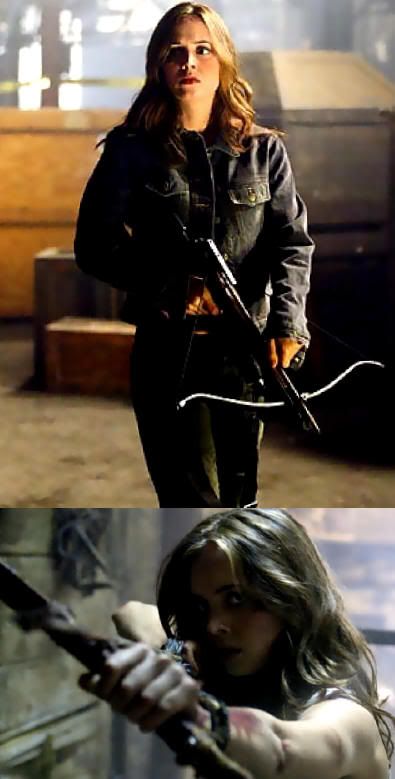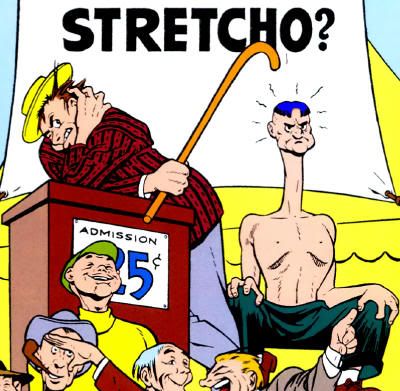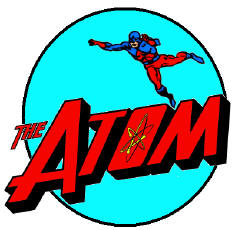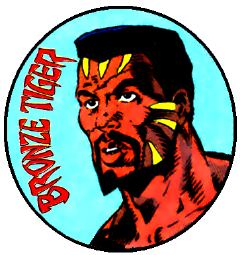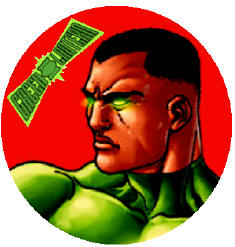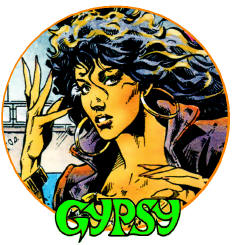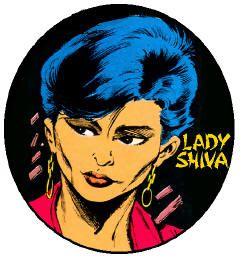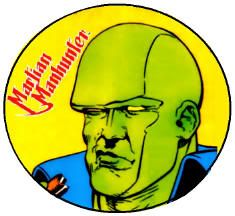It's Anj from
Supergirl Comic Box Commentary, here at the Bloodlines site to once again take a look around the DCU. Given the impending DCnU, one of the things I have been doing recently is seeing which characters are making a comeback in the relaunch and looking back at their earlier incarnations. And, like many of my posts, this one is long (probably too long) so feel free to settle in.
One of the books I am actually excited about is the new
Hawk and Dove, by writer Sterling Gates and art by Rob Liefeld. This is something of a confluence of riches for me. I have always been a fan of Hawk and Dove, especially the Hank and Dawn version of the characters. I gobbled up the Kesel/Liefeld mini in the late 80s and then collected the subsequent title. So I probably would have sampled the title no matter what. Adding Liefeld on art is inspired, harkening back to the DCU that is being tossed aside.
But really, I was completely sold when I heard Sterling Gates was writing the book. I was a huge fan of Gates' run on
Supergirl, his stories elevating the character. That was a historic run for Supergirl. So I can't wait to see what he will do with the Hawk and Dove characters and ideas. Will they still be agents of Chaos and Order? Or something else entirely?
This being Bloodlines, and me being me, I figured I would go all the way back to Hawk and Dove's first appearance for my review. So here is
Showcase #75, drawn by legend Steve Ditko and co-written by Ditko and Steve Skeates.
I love the concept of
Showcase, a book were ideas could be shown, new talent unveiled, and reader interest gauged. If a concept or character did well, they could 'graduate' from
Showcase and move to their own title. The characters that started in
Showcase is a who's who of the DCU including the Barry Allen Flash, the Hal Jordan Green Lantern, the Ray Palmer Atom, and many more.
Ditko premiered not only Hawk and Dove in
Showcase but also the Creeper. I have to say again (because I think I mentioned it in my
Stalker posts here) I came to appreciate Ditko and his art later in my life. As a young reader, I thought his stuff looked awkward and rushed. Now I think it is simply magic.
Ditko starts the book out at a college campus where dual demonstrations are dueling over war.
On one side are the pacifists, students preaching peace, settling issues with compromise rather than weapons. In that camp is Don Hall, a student at the university.
On the other side are the supporters of the war, hoisting signs like 'keep up the bombing'. These students think that enemies need to be taught the errors of their ways. And that means might makes right. In that group is Hank Hall, Don's younger brother.
Obviously, the two are on opposite ends of the spectrum politically and philosophically. And Ditko does a good job showing that even in their body language, Hank taut with clenched fists and Don laid back, hands open, palms up.
Don and Hank's father is a judge, a nice twist for this book. As a judge, he needs to balance those two ideas of punishment and leniency, of war and peace. He probably was set up as the voice of wisdom in this book.
Ditko certainly didn't believe in shades of gray (as seen in the black and white beliefs of his Mr. A). If you did something wrong, you deserved punishment. So it isn't surprising to see Judge Hall throw the book at a local mobster Dargo.
And Judge Hall mediates arguments at home as well. I wonder if the Judge was somehow Ditko's voice in this book. Here the Judge seems shocked that his sons are so attached to one viewpoint, to be so irrational. There is only one way to solve problems ... with logic. Not with just power or just compromise.
Unfortunately, Dargo's men aren't happy that their boss has been imprisoned. They lob a grenade into the Hall residence nearly killing the judge. The Judge ends up being admitted to the hospital to recover.
This murder attempt rattles the boys who respond typically. Hank wonders if just one guard could stop Dargo's men from trying again. Meanwhile Don is happy feeling that the one guard will dissuade any further attempt.
Outside the hospital, Hank spies one of Dargo's men and convinces Don that they should follow him.
Surprisingly, Don acquiesces.
Hank ends up taking it too far however. The Halls follow the man back to Dargo's safe house. But instead of calling the police at that point, Hank decides the two should enter the lair to find out more. It turns out to be a mistake because the two get trapped in a small room with no exits. The door they entered is jammed. It is the first time that we see that Hawk's methods have their down side too.
While trapped, the two hear Dargo's men talk about storming the hospital and finishing off the judge.
Trapped, fearful for their father, and frustrated, the two cry out hoping for the power to make a difference.
In classic comic book style, the two are answered by a mysterious voice. Hank simply wants power so he can punish the criminals. Don wants to save their father. Similar goals albeit with very different tactics.
The voice recognizes the two for what they are ... a hawk and a dove.
The two are transformed into their avatars and their powers are explained. They will be superior forms of their current abilities. They can transform when they witness injustice. But when the problem is solved, when their powers aren't needed, they will revert.
Don isn't even sure if he wants to accept the powers. But he knows they are needed to save his father.
The next pages are basically a melee in the hospital with Hawk bashing everyone within arm's length. In the meantime Don is pretty worthless.
Finally Dove shows his worth, stopping Dargo's lieutenant and restraining him. Dove figures he will simply hold the man until the police arrive. But Hawk decides to end things his way ... with a left hook. It makes Dove think his brother is no better than a barbarian.Again though it shows the merits of both philosophies. While Hawk did stop the other men, he would have overlooked this gangster and his father would have died.
Still, Dove is barely a factor in this fight while Hawk is clearly a dynamic catalyst.
With Dargo's men stopped, the two brothers have to leave quickly. The threat has passed and they rapidly return to their human forms.
But they are hardly heralded as heroes. Instead, their father lays into the pair's vigilante tactics. I like the irony here. Here the judge seems to be siding more with Dove than with Hawk. Again, I think the judge most likely was the moral compass of the book, showing where and when each side of the Hawk/Dove argument should logically utilized.
Interestingly, despite the Showcase appearance, the issue already trumpets a
Hawk and Dove solo title. DC must have been pretty certain that these characters would resonate with the comic readers of the time. That title lasted a short 6 issues with Ditko only penciling the first 2 issues and writing none of them. I have never read any of those issues.
The two characters sort of limped around the DCU thereafter, occasionally appearing in Teen Titans.
Dove, while saving a young child, ended up dying in
Crisis on Infinite Earths #12. This sent Hawk down an even darker more violent road.
Finally in 1988, the concept of Hawk and Dove returned with Dawn Granger taking over the role of Dove, gaining the Dove powers at the very instant Don died. She then used her new found powers to save her mother. I loved this mini-series, especially this cover which sports one of my favorite comic cover cliches 'Together again for the first time!'. In this comic, the two discover they are agents for the Lords of Chaos and Order.
Of course, after that miniseries and the resulting series, the characters get sort of put into a blender. Dove 'dies' and Hank becomes the super-villain Monarch in Armageddon 2001. Then he becomes the super-villain Extant. Then Hank dies. Then Dawn returns and her aggressive sister becomes Hawk. Then Hank is resurrected as a Black Lantern and kills the new Hawk (who also becomes a Black Lantern). Then Hank gets resurrected by the White Lantern in
Brightest Day and Hank and Dawn are Hawk and Dove again. Just dizzying changes.
Still, the concept of avatars of order and chaos working together is an interesting one. Hopefully Hawk and Dove have stabilized as these characters and Gates and Liefeld will give them the respect and stories they deserve.
The new
Hawk and Dove #1 is on sale on 9/7/11.


